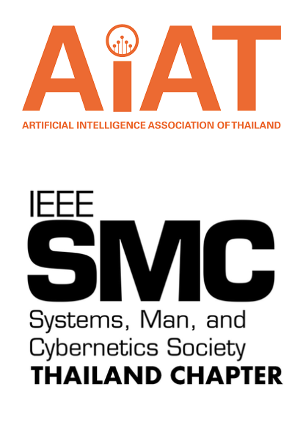A Review of MATSim: A Pilot Study of Chatuchak, Bangkok THAILAND
DOI:
https://doi.org/10.14456/jiist.2020.1Keywords:
Agent-based modeling, Transportation, Road transportationAbstract
Transportation is one of the basic infrastructures that has become an important factor for urban planning and development. Studying on the transportation system can lead to a better understanding of transport facilities, the traffic system, current situation and its behavior, is necessary. However, to reveal every object and its dynamic that happens in the traffic system is impossible without a tool and techniques. MATSim is a simulation model software used to assign the traffic between origins and destinations. Most of MATSim applications have been used for developed countries. Nevertheless, Bangkok is one of several cities challenging on the over-saturated situation on road traffic. To check the situation, the simulation can be used to explore highly concentrated traffic flow. Thus, the objective of this study is to examine the applicability of the Multi-Agents Transportation Simulation (MATSim) framework to Bangkok situation. For the travel demand forecasting, it commonly referred to as the four-step model. And, MATSim framework is one model for the fourth step of the model which is traffic assignment or route assignment. Therefore, this study explored MATSim by experimenting with two plans of agents represented by people travelling from home to work and work to home over Chatuchak district, Bangkok. The sample size of agents using in the simulation are 10, 100, and 500 agents. The results show the traffic flow differently because of the volume of agent effect on the traffic flow.
References
W Axhausen, K., Horni, A., & Nagel, K. (2016). The multi-agent transport simulation MATSim (p. 618). Ubiquity Press.
Rieser, M., Dobler, C., Dubernet, T., Grether, D., Horni, A., Lammel, G., ... & Nagel, K. (2014). MATSim user guide. Zurich: MATSim.
Pomlaktong, N., Jongwilaiwan, R., Theerawattanakul, P., & Pholpanich, R. (2014). Road transport in Thailand. In priorities and pathways in services reform: Part II—political economy studies (pp. 227-243).
M. G. McNally, “The Four Step Model,” Inst. Transp. Stud. Dep. Civ. Environ. Eng., 2000.
McNally, M. G. (2007). The four-step model. In Handbook of transport modelling (Vol. 1, pp. 35-53). Emerald Group Publishing Limited.
Kaddoura, I., & Nagel, K. (2018). Using real-world traffic incident data in transport modeling. Procedia computer science, 130, 880-885.
Anda, C., Medina, S. A. O., & Fourie, P. (2018). Multi-agent urban transport simulations using OD matrices from mobile phone data. Procedia computer science, 130, 803-809.
Xiang, S., Gapsys, V., Kim, H. Y., Bessonov, S., Hsiao, H. H., Möhlmann, S., ... & Zweckstetter, M. (2013). Phosphorylation drives a dynamic switch in serine/arginine-rich proteins. Structure, 21(12), 2162-2174.
Hörl, S., Balac, M., & Axhausen, K. W. (2018). A first look at bridging discrete choice modeling and agent-based microsimulation in MATSim. Procedia computer science, 130, 900-907.
Kaltenbrunner, A., Meza, R., Grivolla, J., Codina, J., & Banchs, R. (2010). Urban cycles and mobility patterns: Exploring and predicting trends in a bicycle-based public transport system. Pervasive and Mobile Computing, 6(4), 455-466.
Zilske, M., & Nagel, K. (2015). A simulation-based approach for constructing all-day travel chains from mobile phone data. Procedia Computer Science, 52, 468-475.
Kim, G. Y., Jeoung, I. S., Cho, W. S., Lee, K. H., Cho, I. H., & Lee, Y. M. (2014, February). OLAP-based analysis on passengers’ bus usage patterns. In Proceedings of the International Conference Data Mining, Civil and Mechanical Engineering (ICDMCME), Bali, Indonesia (pp. 4-5).




